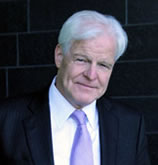Abstract
The purpose of this article is to show the relationship between the mechanism of an ankle injury (inversion, eversion, etc.) and the most likely result of the injury (sprain, fracture, etc.). While there are no absolute rules for positively associating each mechanism of injury with a specific type of injury, this article will provide some guidance for those attempting to prove or disprove the relationship between mechanism and injury type. Furthermore, this article will also illustrate common Integrative Medicine treatments for patients with ankle injuries, including acupuncture and homeopathic remedies.
Scope of Paper
A preliminary examination of the anatomy of the ankle, as well as the kinematics that the structures of the ankle generate, will precede a discussion of types of injuries to the ankle. Following will be a discussion of the relationship between the type of injury and the mechanism of injury, from both an anatomical point of view and by example. Finally, we will discuss common integrative medicine treatments which patients with ankle injuries might undergo as part of their "whole body" treatment.
Ankle Anatomy
The ankle is formed by the distal tibia, distal fibula, talus, and calcaneus (Figure 1). Superficially, the ankle's landmarks are the bony prominences on each side of the ankle, known as the medial and lateral malleoli, which are the rounded downward projections at the distal ends of the tibia and fibula, respectively (Figure 2). The tibia, or shin bone, is the larger and stronger of the two bones of the leg below the knee and connects the knee to the ankle. The articular surface of the distal end of the tibia is also known as the plafond or pilon. The plafond articulates with the talus; together, they distribute weight bearing throughout the ankle (Small, 2009, p. 314). The fibula, or calf bone, is located on the lateral side of the tibia. The fibula is connected to the tibia both proximally and distally. The lower extremity of the fibula projects below the tibia and forms the lateral portion of the talocrural joint. The fibula maintains ankle mortise stability during weight bearing. The talus is the second largest of the tarsal bones. The superior, dome-shaped surface of the body of the talus is known as the trochlea. The calcaneus, or heel bone, meets the talus in two places: at the posterior and anterior talocalcaneal articulations. The ankle is surrounded by the articular capsule, which is attached to the borders of the articular surfaces of the malleoli proximally and to the distal articular surface of the talus distally (Norkus & Floyd, 2001, p. 69).
Joints of the Ankle
The ankle is comprised of three joints: the talocrural joint, the subtalar joint, and the distal tibiofibular syndesmosis (Figures 3 and 4). The talocrural joint, also known as the tibiotalar joint or the mortise joint, is a uniaxial, modified-hinge joint formed by the medial malleolus of the tibia, the lateral malleolus of the fibula, and the talus. The tibial plafond articulates with the trochlea. The convex shape of the trochlea allows it to fit snugly into the concave plafond, which stabilizes the ankle mortise, the fork-like structure of the malleoli (Norkus et al., 2001, p. 68). This is important because the ankle bears more weight per unit area than any other joint in the body (Morrison & Kaminski, 2007, p. 135). The medial malleolus articulates with the medial aspect of the trochlea, and the lateral malleolus articulates with the lateral aspect of the trochlea. The talocrural joint allows for dorsiflexion and plantarflexion of the ankle. The normal range of motion (ROM) for the ankle joint is 30 degrees of dorsiflexion and 45 degrees of plantarflexion. Normal gait requires only 10 degrees of dorsiflexion and 20 degrees of plantarflexion (Small, 2009, p. 315). During dorsiflexion, the wider anterior portion of the talus occupies much of the mortise as it wedges itself between the medial and lateral malleoli; this is considered the safest ankle position due to the increased joint stability created by the increased contact of the articular sufaces of the talocrural joint. The subtalar joint lies just inferior to the talocrural joint. The subtalar joint is a gliding joint, where the posterior aspect of the talus articulates with the superior aspect of the calcaneus. The anterior subtalar joint is formed by the head of the talus, the anterior- superior facets, the sustentaculum tali of the calcaneus, and the concave proximal surface of the tarsal navicular. The posterior subtalar joint is formed by the inferior posterior facet of the talus and the superior posterior facet of the calcaneus. The anterior and posterior subtalar joints behave like a single ball-and-socket joint. The subtalar joint averages a 42-degree upward tilt and a 23-degree medial angulation, allowing for inversion and eversion of the ankle (Fong, Chan, Yung, & Chan, 2009, p. 3).
The distal tibiofibular syndesmosis is a syndesmotic joint formed by the joining of the distal fibula and tibia by the anterior and posterior tibiofibular ligaments and the interosseous membrane (Molinari, Stolley, & Amendola, 2009). The distal tibiofibular syndesmosis allows for limited translation and rotation during dorsiflextion and plantarflexion, accommodating for the asymmetric talus (Fong et al., 2009, p. 3).
Ligaments of the Ankle Joint
. . .Continue to read rest of article (PDF).
Kenneth Alvin Solomon, PhD, PE, Post PhD is Chief Forensic Scientist at The Institute of Risk and Safety Analyses (www.irsa.us). His formal education includes a BS, MS, and PhD in Engineering and a Post PhD each from UCLA. (1971, 1971, 1974, and 1977, respectively). For the majority of his professional career he was a senior scientist at RAND (Santa Monica, CA) as well as faculty at the RAND Graduate School and Adjunct Professor at UCLA, USC, Naval Post Graduate School, and George Mason University. He served as a Professional Service Reserve with two police agencies and a Police and Safety Commission. Dr. Solomon and his staff are engaged in Forensic studies primarily concentrating in accident reconstruction, biomechanics, and x factors.
©Copyright - All Rights Reserved
DO NOT REPRODUCE WITHOUT WRITTEN PERMISSION BY AUTHOR.











